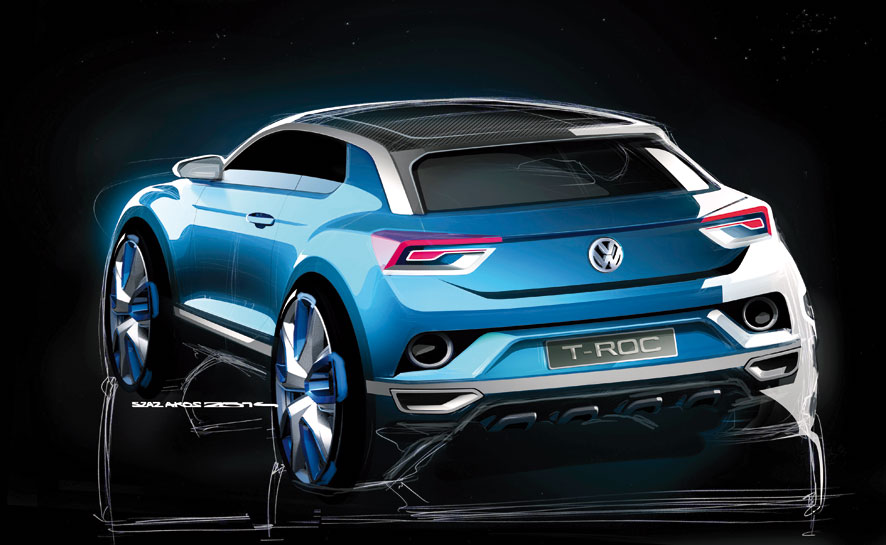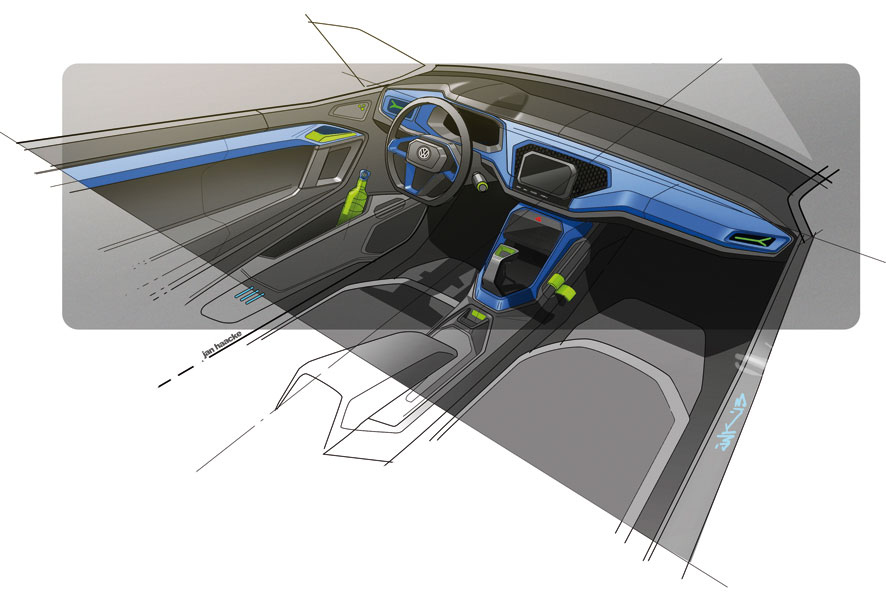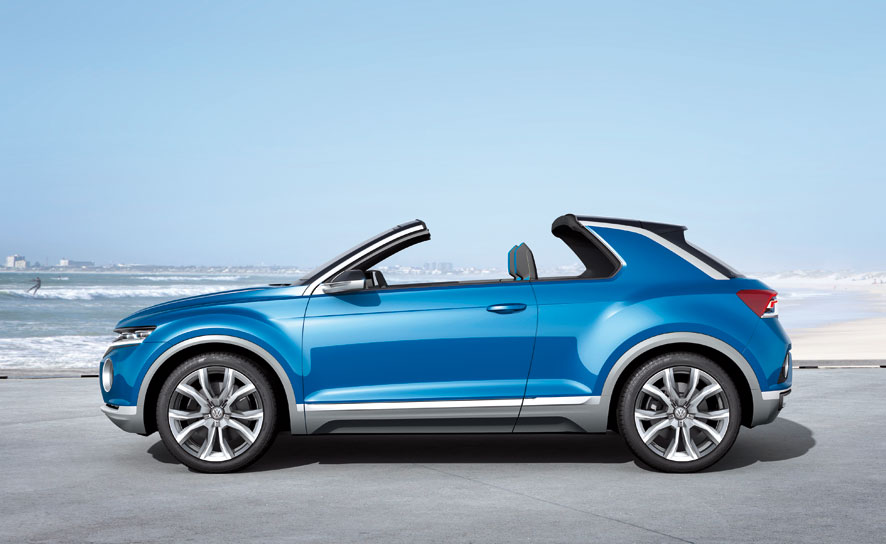The SUV is evolving into something less aggressive and more “crossover”, but shows no signs of losing ground in any of the world’s markets. So having a full range of sport utility models to cover every segment is an increasingly important strategic move – and the T-Roc presented at Geneva shows that this is exactly where the VW Group is heading. “It’s important that every model still has its own distinct personality, like any true Volkswagen”, says VW Group design chief Walter de Silva, as he introduces the concept exploring a possible new compact SUV for the Wolfsburg-based brand.

The Volkswagen design team headed by Klaus Bischoff began work on the project to define a model sitting between the Tiguan and Taigun, based on the MQB modular platform. “An unusual style was called for, with the surprise and delight factor needed to capture customers in a segment where there are already other rivals”, explains Bischoff, “but it also had to respect certain typical characteristics of our SUV family, such as well-balanced proportions, the indispensable underlying requisite for all our projects alongside the quality and precision of the design.”
To express the uniqueness of the T-Roc, the designers chose an all-new layout for the facial identity. “We defined a grille with a three-dimensional architecture, which extends from arch to arch and with the VW badge sitting proudly in the centre” continues Bischoff, as he points out the 3D hexagonal elements in the grille itself. “Completing the picture is a unique light signature – as the LED light units are not behind the usual protective plastic lens but set in a contoured metal element that underscores the entire grille.”

Apart from the badge, the only circular details are the lamps incorporated in the bumper, “which are inspired by the Volkswagen Karmann Ghia Type 34”, says Bischoff, “but obviously with the technology of tomorrow”. With all-digital instrumentation behind the steering wheel, the T-Roc also heralds the technological revolution in this regard coming in the next generation of Volkswagens (and there is already much speculation around the dashboard of the new Passat, due at the end of the year). The Volkswagen group has been actively working on digital instrumentation for some time, and the first results of this could be seen in the Audi TT. “In the past, the television was set in a large, bulky cabinet, but now it’s a curved sheet: it would be absurd to think that the car will not also evolve in the same direction”, maintains Walter de Silva. “Digital instrumentation is an important trend in interior design for the near future, which will of course be pursued with absolute regard for safety.”

The original traits of the exterior design are not limited to the new face alone, and also continue in the side view, where tall flanks – with muscular arches over lean sills – are contrasted by the slender side daylight opening. The roofline is described by two arcs extending upwards from the base of the A and C pillars – one in aluminium and another, darker feature including the roof itself and the spoiler. Removing the central roof panels and lowering the windows transforms the car into an attractive cabriolet, an effect visually accentuated by a C-pillar reminiscent of a roll-bar, while the precise, high-tech treatment of the tail continues to convey the image of a dynamic, compact SUV, with taillights protruding laterally to extend the surfaces of the shoulders.
The four-seat cabin is dominated by the colour blue, in both the painted finish of the dash inserts and side panels. The whole interior, including the seats, has a color gradient, starting at the windowline with black and ending in blue at the bottom, with the carpets blue as well.
The article continues in Auto & Design no. 206











